nicolas3141 Joined: May 25, 2007
Posts: 185
Location: Christchurch, New Zealand
Veroboard is great and not difficult to use. If you must have the most compact design it can be frustrating, but if you are happy to use just a little more space it makes things a lot more enjoyable. Same with PCB design I guess. Anyway, my recipe for easy veroboard layout goes like this:
1. Start with a piece of veroboard about 80mm square. It usually doesn't need to be quite as big as that, but the extra gives you some room for later kludges if necessary. Or for a simple circuit 50mm square is plenty.
2. Align all the chips in a row (line astern) with about 3 stripes in between each one. Most veroboard comes in widths of about 80mm, so this technique works best for circuits with no more than three 14/16 pin chips or five 8 pin chips.
3. Use a mini grinder or similar tool to cut all the tracks from one side to the other underneath the line of chips. Its _much_ easier to cut all the tracks in one line rather than fuss about cutting some here and some there.
4. Run resistors, caps and wire links parallel to the line of chips wherever possible.
5. Designate one stripe between each chip as a ground and use a wire link to bridge the cut you just made.
6. If you need to cross the line of chips with a wire or resistor, I recommend doing it on the copper side of the board, so all my vertical oriented components are on one side and laterals on the other. I also recommend attaching front panel wires on the copper side (surface mount fashion) rather than through the holes.
Doing it this way you can often get away with building direct from a schematic rather than having to go through a separate board design process.
Cheers,
Nicolas



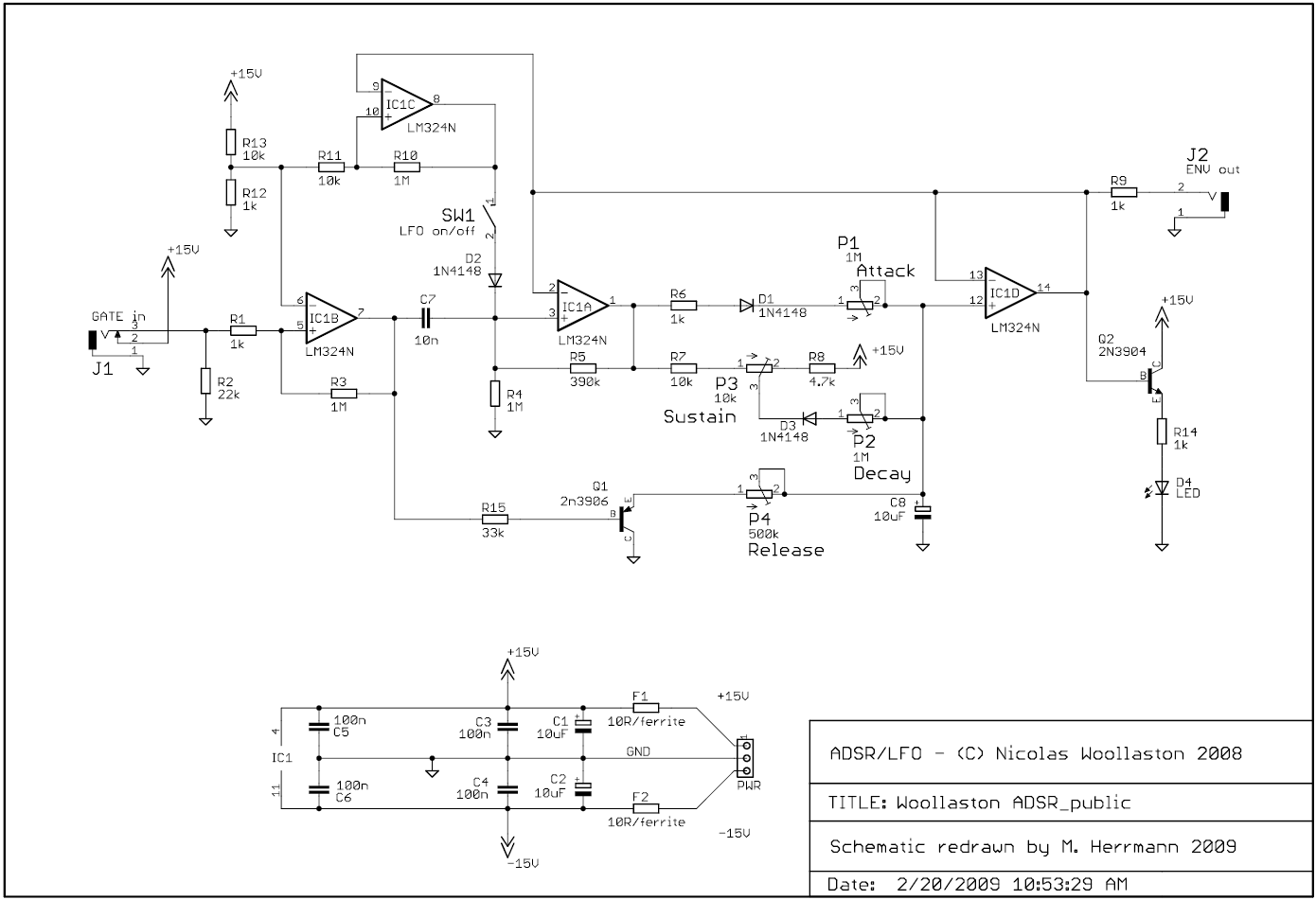
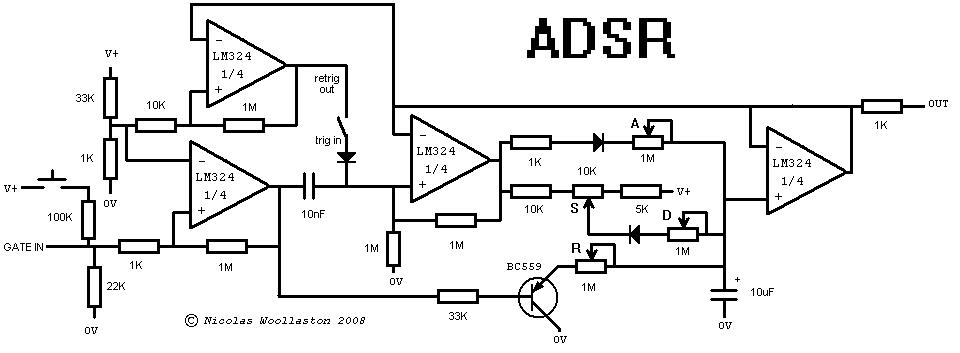

Woolaston ADSR PCB LAYOUT


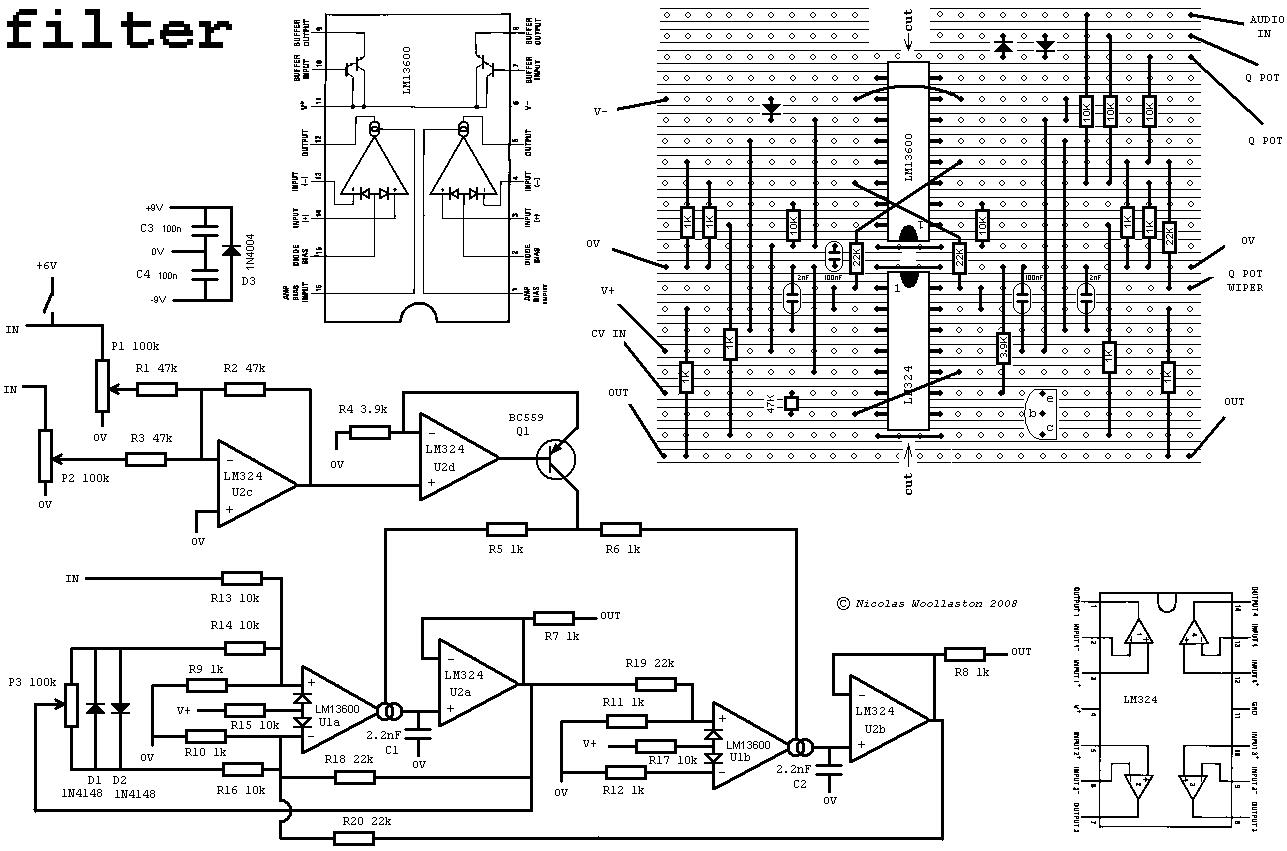

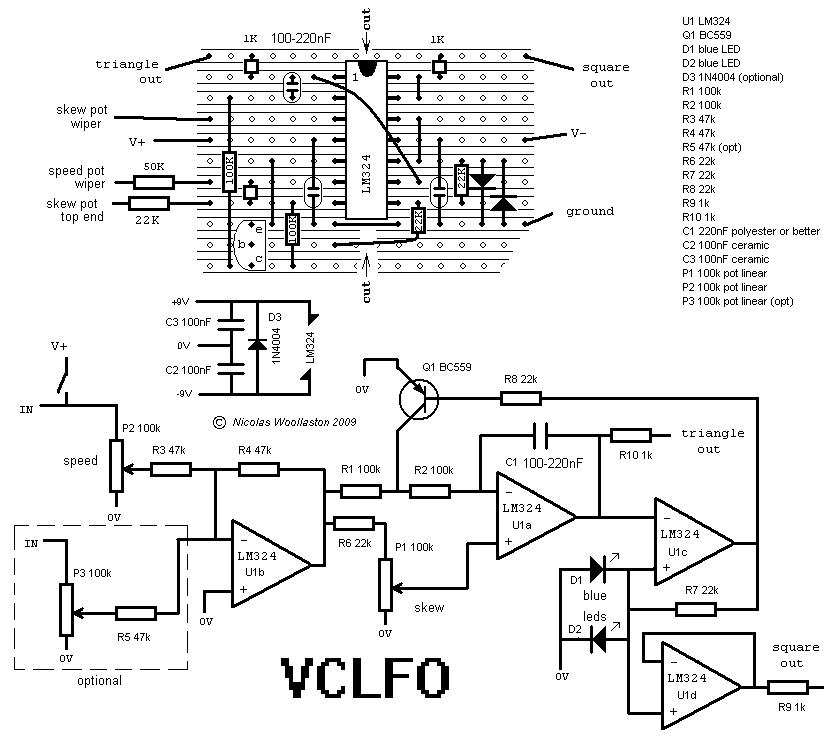
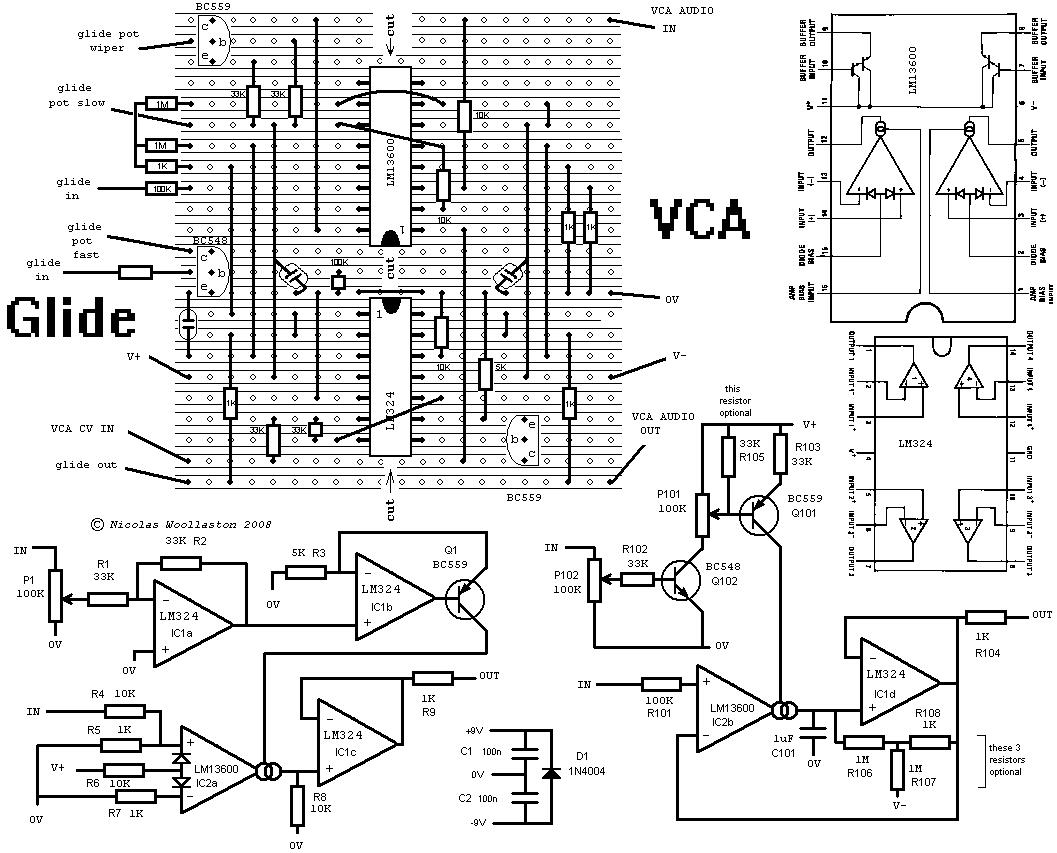


tri2saw

vca-simpler

Touch sensitive noise - cracklebox derivative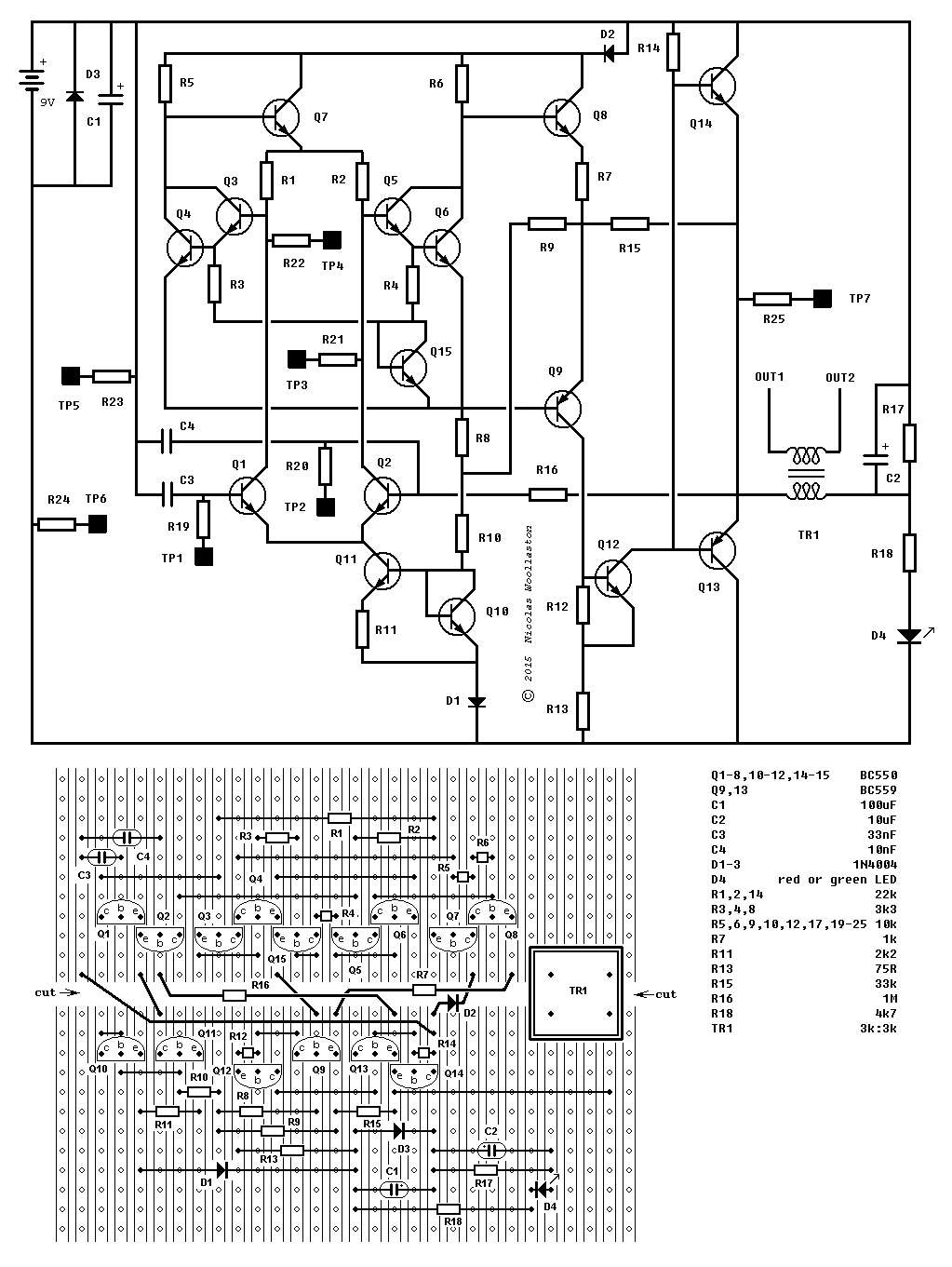
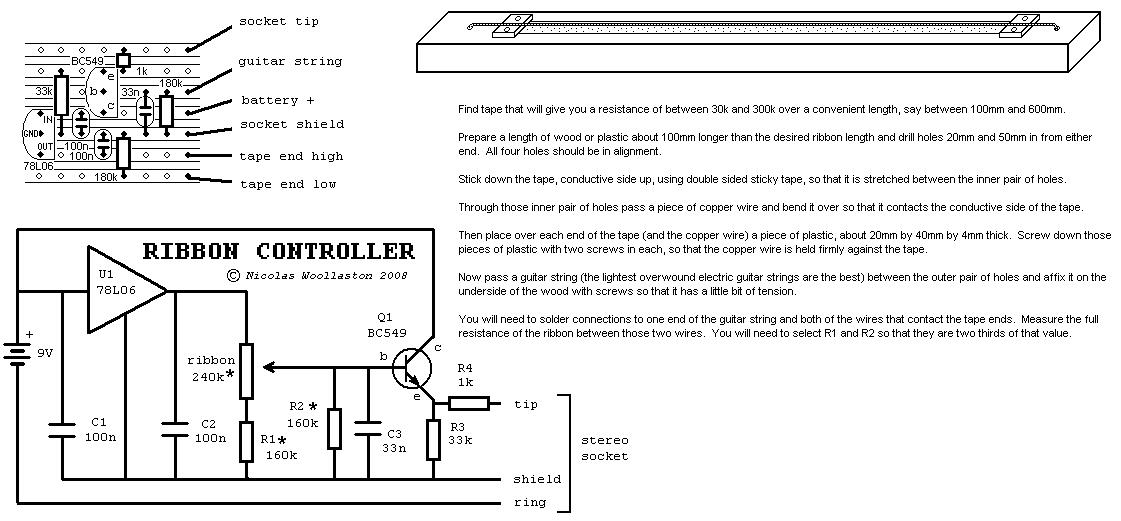
Simple ribbon controller for V/Hz synth:
http://electro-music.com/forum/topic-32651.html Super simple V/Hz VCO:
http://electro-music.com/forum/topic-32689.html Pitch-not-critical Sooper-Simple VCO;
http://www.electro-music.com/forum/topic-38087.html Simple sawtooth VCO
http://electro-music.com/forum/post-292718.html V/Hz state variable filter:
http://electro-music.com/forum/topic-34426.html Noise source:
http://electro-music.com/forum/topic-34745.html TRI2SAW:
http://electro-music.com/forum/topic-27934.html ADSR:
http://electro-music.com/forum/topic-31473.html LFO & VCLFO:
http://electro-music.com/forum/topic-32372.html Simple S&H and VCA
http://electro-music.com/forum/topic-41277.html updated and edited, 08-05-10, by v-un-v



 some super simple Woolaston vero/strip boards for Special Interests from the archives
some super simple Woolaston vero/strip boards for Special Interests from the archives
hertz VCOs
works with Korg ms20,ms10,ms50,x911,old yamaha cs, & vintage PAIA plus FATMAN
good examples for basic vero/stripboard DIY method